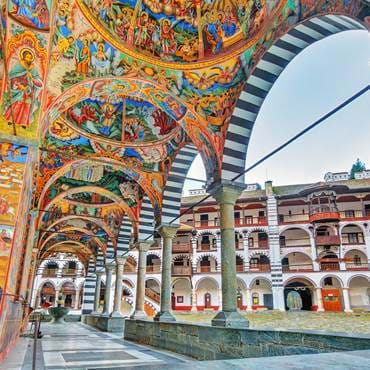
Bulgaria
Bulgaria is a Balkan nation with a stunning, diverse terrain that encompasses the Black Sea coastline, boasts a mountainous interior, and has great rivers – including the Danube. It is a real cultural mix with Greek, Slavic, Ottoman, and Persian influences, and the country has a rich heritage of traditional dance, music, costumes, and crafts. Its capital city, Sofia, dating to the 5th century BC, sits at the foot of Vitosha mountain.
Bulgarian ancient history begins with the Thracians. The Thracians were a group of Indo-European tribes that lived throughout the Balkan Peninsula from about 1000 BC. They lived simply in small, fortified hilltop villages, but had an advanced cultural life. Many elaborate gold and silver treasures have been found in Bulgaria, and you can still admire some of their burial tombs today. From 200 BC, the Romans became the main power in Europe. By 50 AD, all the Thracian tribes were obliterated and the Romans had created the provinces of Thrace in the South and Moesia in the North. However, by 1400 the Ottoman Turks had become a disciplined war machine with superior numbers, and were unstoppable. By the middle of the 15th century, south-eastern Europe was part of the Ottoman Empire, a situation that would last for 500 years. By the end of the 18th century, Turkish rule became more tolerant, and a group of wealthy Bulgarian merchants got more and more freedom. In the present, Bulgaria has a turbulent and diverse history of revolution and instability. Its economy is growing steadily and tourism is increasing rapidly, due to Bulgaria’s beautiful architecture, rich history and beaches.
 GB
GB
 US
US



